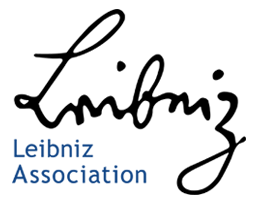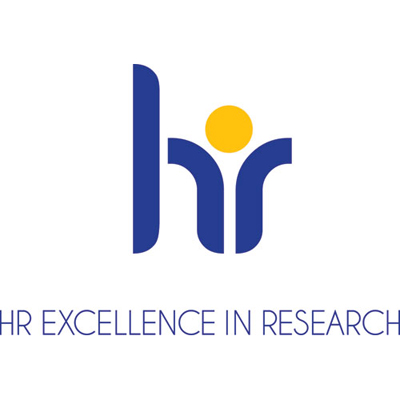Plasma Surface Modification
Plasmas are an indispensable tool for targeted surface modification. They can impart additional new properties to materials and allow the complete modification of the interfacial properties of components. INP has many years of experience in the development of plasma-assisted processes for the refinement of product surfaces, both in the life science sector and in the field of thin-film technology in general. Plasma- and ion-assisted surface processes span the spectrum from structured material deposition and the targeted adjustment of interface properties to the production of functional layers, e.g. for the field of vascular replacement and load-bearing implants.
In order to find the optimal solution for each application, INP offers a wide range of functional surfaces for use in the following areas:
- Improvement of cell adherence
- Anti-adhesive surfaces
- Surfaces for structured cell growth
- Antimicrobial surfaces
- Surfaces for the immobilisation of enzymes
- Ceramic coatings
- Photocatalytic surfaces
- Plasma cleaned and plasma polished surfaces
- Functional coatings
The wide range of applications is based on a number of process-related advantages of plasma processes, such as low thermal load on the components, environmental friendliness, controllability and low direct influence on the basic material properties. Since process costs and simple integration of plasma processes into existing production lines are of great importance, especially in industrial applications, INP offers many processes both at low pressure for highest purity and at atmospheric pressure for short process times.
Application Fields
Photocatalytic surfaces are characterised by a layer of metal oxide, usually TiO2, which is activated by irradiation. Thus, in combination with a naturally present thin film of water, for example, OH radicals are produced, which then interact with cells, microorganisms, fats and other liquids. Such surfaces are particularly advantageous for implants. TiO2 is approved as a material for medical implants, so that there are no major hurdles to overcome with regard to the approval of such a refined implant as a medical product.
For a variety of applications, it is important that proteins are immobilised on surfaces. Whether a protein that is anchored to a surface shows its natural activity depends strongly on the type of anchoring. Linkers and spacers, for example, are used for the covalent coupling of proteins to surfaces. The decisive factor is that the protein retains its natural activity.
Although enzymes are sometimes very specific and selective, in many cases they do not fulfil the process stability required in industrial applications. To improve stability, the enzyme or biocatalyst can be immobilised and the yield increased by plasma-assisted surface modification of the carrier material.
Microfluidic systems are of great importance for bioanalysis and integrate analytical functions such as sample introduction, chemical and biochemical reaction and detection on one chip. With the help of plasmas and masks, chemically different microstructures can be created on a variety of materials in a targeted manner. Multi-step plasma process sequences can be used to create a combination of cell-attracting and cell-repelling areas on the surface.
Ceramic surfaces are often used in technical as well as biomedical applications. Compared to conventional processes, the already established method of plasma spraying allows the creation and development of unique coatings with tailor-made, multiple properties. The uniqueness of the process lies in the almost arbitrary combination possibilities and mixtures of powders (metals, glasses, ceramics, polymers, etc.) and the high material deposition rate or layer thickness. In the biomedical field, coatings with TiO2, CaP, CaCO3, copper, silver, ZnO and their mixtures are the core competence of the INP. The system used at INP is an industrial system with a very common plasma source. This has the advantage that coatings and coating systems developed with it can be directly used by the customer or ordered from established contract coaters without process scaling.
Thin layers give many materials better properties. Depending on the application, the coatings fulfil special functions: in the case of tribologically stressed components, they reduce mechanical abrasion or, in the case of metals, the tendency to corrosion. They serve to improve the adhesion of material composites, have a decorative character, make it easier to keep clean or can give the surface of plastics increased scratch protection. As a structurally conformal, low-porosity and transparent barrier layer, they prevent the permeation of gases (e.g. in PET bottles) or protect sensitive goods from the diffusion of solvents from the wall of plastic containers. In semiconductor technology and optics, coatings take on functions as dielectrics, EMC shielding or anti-reflective layers.
Project Topics
The spread of electric vehicles is increasing and their market share is growing rapidly. However, there are still limitations to electric mobility in terms of range compared to conventional combustion engines. In addition to larger battery capacities, improvements can be achieved through increased efficiency and lower vehicle weight.
To this end, the Leibniz Institute for Plasma Research and Technology (INP) is conducting research in the joint project 'Integrative Layer Heating Module' together with the partners
- Webasto Thermo & Comfort SE; Webasto Neubrandenburg GmbH
- Fraunhofer Institute for Large Structures in Production Engineering IGP
- Welding Technology Training and Testing Institute Mecklenburg-Vorpommern GmbH
on technical solutions for electric vehicle heaters. The core component is a heating module that uses thin layer structures for heating. This allows the high-voltage components in electric vehicles to be used effectively at their optimal operating point while saving moving mass. The introduction of such heating modules thus brings both economic and ecological advantages.
Essential for the quality of the product is the production of thin ceramic and metallic layers. These are applied by means of atmospheric pressure plasma spraying. Although this process has already proven itself for years in many areas of thin-film technology, its practical application in industrial manufacturing processes raises questions regarding the homogeneity of the layer thickness to be achieved, the utilisation of the raw material, the material properties to be achieved, the process stability over time or even the life cycle of the plasma torches.
This is where INP comes in with its many years of expertise in the field of plasma diagnostics and plasma technology. Optical methods (spectroscopy and high-speed photography) are used to characterise the plasma properties of the plasma spraying systems involved in production and to visualise layer growth. The experimental findings are complemented by numerical simulations and combined to form a well-founded picture of the plasma process.
From process monitoring to targeted process control, the project contributes to producing products of a consistently high quality and to making the manufacturing process more effective by reducing maintenance.
Scientific contact:
Dr. Thorben Kewitz
Tel.: 03834 554-3836
E-Mail: thorben.kewitz@inp-greifswald.de


Particle composites are processed into high-quality components by means of sintering, among other things. The material and form-fit structure of several materials means that the porosity changes in each production step. This is largely dependent on the parameters of the production processes, has a significant influence on the properties of the finished product and therefore makes it necessary to test the density of the workpieces between the individual production steps before tempering/sintering.
Up to now, the density of workpieces has typically been measured in the laboratory, which is time-consuming and cost-intensive. The laboratory measurement methods that represent the state of the art (e.g. micrograph analysis, gas pycnometry) therefore entail practical process times of 1-2 days.
In contrast, the Archimedes' principle measurement method allows non-destructive and rapid density measurement and can also be integrated directly into production processes. However, the application of this method to porous objects that are unstable to moisture, such as green and brown bodies, i.e. ceramic components before the firing or sintering process, has so far been made difficult or impossible by their absorption of liquid during the measurement. This can be remedied by a thin functional coating whose barrier effect effectively suppresses the liquid absorption of the measurement object.
The aim of the joint project with the partners
- Dimensionics Density GmbH
- University of Rostock, Chair of Microfluidics
- Leibniz Institute for Plasma Science and Technology e. V.
is the development of an automated system for the deposition of such a thin functional layer on porous components using plasma-enhanced chemical vapor deposition (PECVD) for non-destructive, production-integrated density measurement according to Archimedes' principle.
The project objective of the Leibniz Institute for Plasma Science and Technology e. V. is the development of such functional layers by means of PECVD, which allow the application of the measurement principle also for porous and sensitive components.
In order to achieve the project goal, different coating processes, plasma sources and chemical starting compounds for coating are being examined for their suitability. In addition to the proven low-pressure processes, the suitability of a locally effective atmospheric pressure plasma for this application is being researched in particular, for which a laboratory model is being set up as part of the project. The results will be evaluated and compared by characterizing the chemical composition and measuring the wettability of the functional layers.

Publications
| Year: |



































